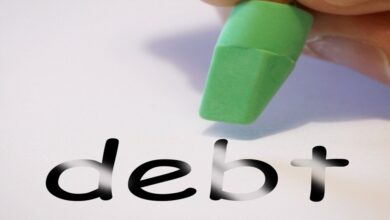Understanding Good Debt vs Bad Debt

Debt is a common financial tool that many people use to achieve their goals, from buying a home or car to funding a college education or starting a business. However, not all debt is created equal. Understanding the difference between good debt and bad debt is essential to making smart financial decisions and achieving long-term financial stability.

What is Good Debt?
Good debt is typically viewed as an investment in your future that can help you build wealth and improve your financial situation over time. Examples of good debt include:
- Mortgages: A mortgage is a long-term loan that allows you to purchase a home. Since real estate tends to appreciate over time, a mortgage can be viewed as an investment that can increase your net worth.
- Student loans: Taking out student loans to fund a college education can be a wise investment in your future earning potential. Studies show that college graduates earn significantly more over their lifetimes than those without a degree.
- Business loans: Borrowing money to start or expand a business can be a good investment if the business is successful and generates profits over time.
What is Bad Debt?
Bad debt is typically viewed as a liability that can negatively impact your financial situation over time. Examples of bad debt include:
- Credit card debt: Credit card debt often carries high interest rates and can quickly spiral out of control if not managed carefully.
- Personal loans: Borrowing money for non-essential expenses, such as vacations or luxury items, can lead to long-term debt and financial stress.
- Payday loans: These short-term loans often come with extremely high interest rates and can easily trap borrowers in a cycle of debt.
Managing Your Debt
While good debt can be a valuable tool for building wealth and achieving your financial goals, it’s important to manage your debt wisely to avoid falling into the trap of bad debt. Here are some tips for managing your debt:
- Stick to a budget: Knowing how much money you have coming in and going out each month can help you make informed decisions about how much debt you can afford to take on.
- Prioritize high-interest debt: If you have multiple debts, focus on paying off those with the highest interest rates first to avoid accruing more interest over time.
- Consider debt consolidation: If you have multiple sources of high-interest debt, consolidating them into a single loan with a lower interest rate can help you save money over time.
- Avoid impulse purchases: Before making a purchase, ask yourself if it’s truly necessary and if you can afford to pay for it without taking on more debt.
Debt can be a valuable financial tool when used wisely, but it’s important to understand the difference between good debt and bad debt. By prioritizing good debt and managing your debt wisely, you can achieve your financial goals and build a solid foundation for long-term financial stability.



